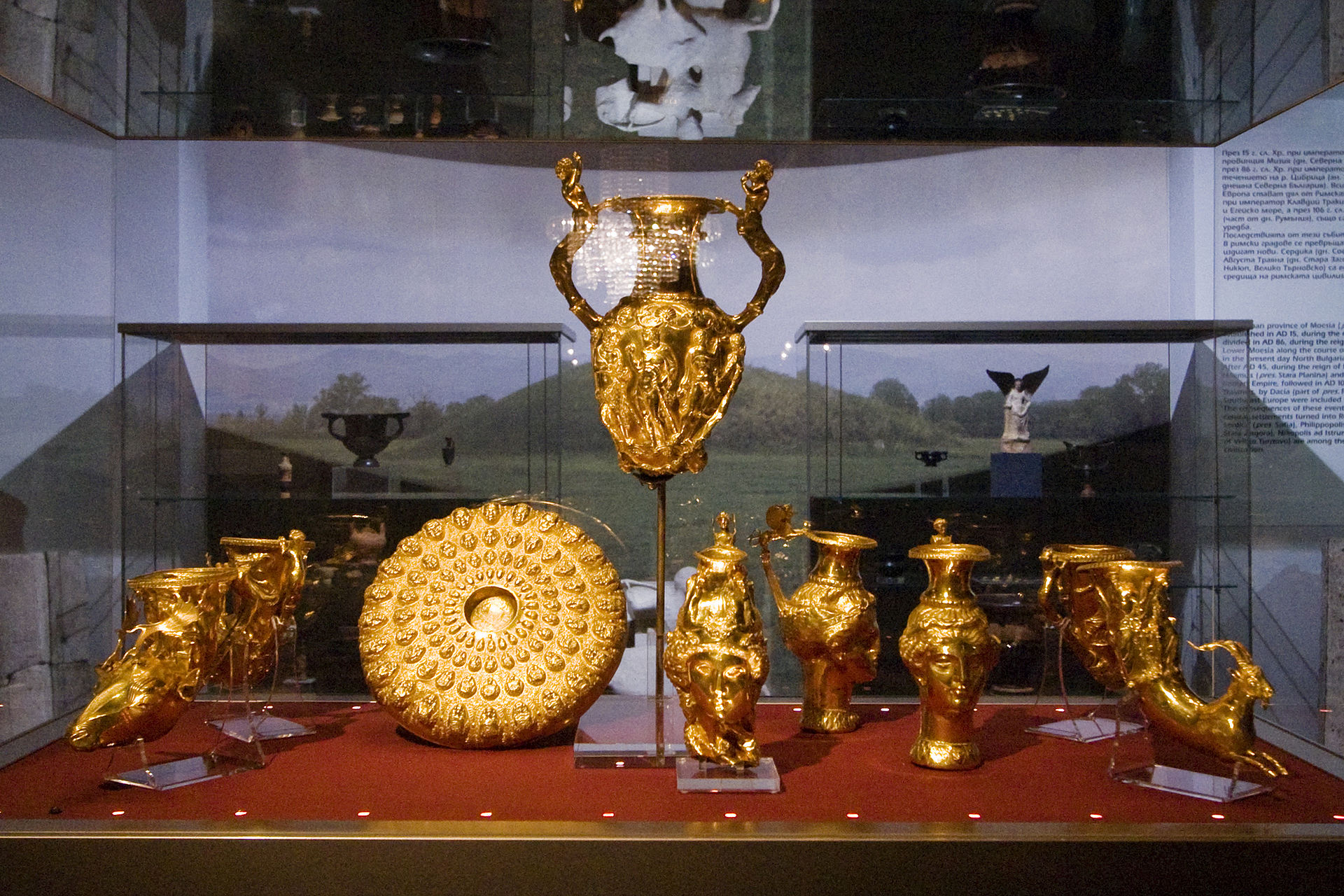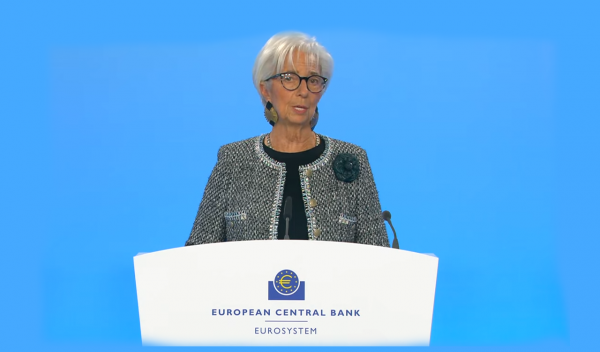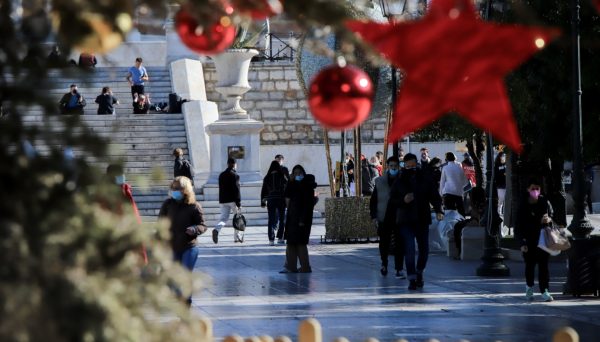
When the Greeks captured the tent of Xerxes, which he had set up on Mount Aigaleo, after the naval battle in Salamis, they found themselves in front of a world of unimaginable luxury and extravagance.
A snapshot that could summarize the gap between the two worlds – the Greeks and the Persians -, whose confrontation has determined the evolution of world history. A struggle between the Greek city-states and the Achaemenid Empire. A struggle between the free, but frugal and disciplined West and the tyrannical, flacid East.
But all those golden ceremonial vessels (rhyta), jewels with emeralds and pearls and elegant wreaths from Greece and Cyprus, Bulgaria, Egypt and Afghanistan which bear the stamp of Persian art or the imprint of its influence on five centuries (550-30 BC) were they simple indications of a good time or did they also function as a necessary political tool that expressed the imposition of power? This aspect the British Museum’s new exhibition “Luxury and Power: Persians and Greeks” attempts to examine. The exhibition opens its doors to the public today and will be on show until August 13 with a controversial aesthetic presentation, which according to several British publications is not far from the definition of kitsch.
Three sections
The wars between the Greeks and the Persians, although they are the most well-known chapter of this history, are not the ones that dominate the exhibition. It’s limited to a few weapons – among them a hoplite’s helmet – and a soundscape of battleships. The main part of the presentation is divided into three sections focusing on position, contrast and composition.
Visitors first get a glimpse of the Persian Empire dominated by an Egyptian-style relief in which Darius I is depicted worshiping Anubis. The Athenian Republic could not be present in a better way than with a part of the frieze of the Parthenon, which is the pinnacle of inexhaustible classical art.
In the next section, the objects produced by the Persian Empire take center stage, and how classical Athens fought the influence of this production even as it mocked the defeated Empire. Because it may have been considered vulgar and ostentatious in the Athens of Pericles to drink one’s wine in an all-gold vessel with relief decoration, yet the luxury of the Persians the exhibis proceed to democratic Athens through the art of drinking vessels made of humble clay.
In the last section comes the merger, as Alexander the Great conquered Persia and “embraced” its artistic ways, while the cultures within his vast empire entered a huge melting pot. This is where one of the most important loans of the exhibition is presented, the treasure of Panaghiouriste, from Bulgaria, a set of seven golden and richly decorated rhyta, an amphora and a bottle, with a total weight of 6.2 kg, which were discovered accidentally. The vases are decorated with scenes from Greek mythology, but bear incised inscriptions relating to their weight in drachmas and darics (gold Persian coins).
Latest News

DM Dendias: We talk With Turkey But We Always Bring Up Their Unacceptable Positions
Second and last day of closely watched conference, entitled 'Metapolitefsi 1974-2024: 50 Years of Greek Foreign Policy', also included appearances by PM Mitsotakis, Ex-PM Tsipras and PASOK leader Nikos Androulakis, among others

Rhodes Airport Tops Fraport Greece’s Regional Airports in 2024 Performance
According to Fraport's data, more than 35 million passengers (specifically 35.2 million) were handled by Fraport-managed airports during the 11 months.

European Central Bank Cuts Interest Rates by 25 Basis Points
It is the fourth cut of interest rates by Europe’s central bank, a move expected by the markets and financial analysts leading to the rate settling at 3%.

Airbnb: New Measures Add €600 in Extra Costs for Property Owners
Property managers face an immediate administrative fine of 5,000 euros if access to the inspected property is denied or any of the specified requirements are not met.

Economist: Greece Included in the Best Performing Economies in 2024
Meanwhile, Northern European countries disappoint, with sluggish performances from the United Kingdom and Germany.

EasyJet Expands Its Routes from Athens
The airline’s two new routes will be to London Luton and Alicante and they will commence in summer 2025.

Capital Link Forum Highlights Greece’s Economic Resurgence; Honors BoG Gov Stournaras
Capital Link Hellenic Leadership Award recipient, Bank of Greece Gov. Yannis Stournaras, an ex-FinMin, was lauded for his pivotal role during Greece’s economic recovery

Tourist Spending in Greece Up by 14%, Visa Card Analysis Shows
Greece’s capital Athens emerged as the most popular destination, recording a 17% increase in transactions with Visa cards, surpassing even the cosmopolitan island of Mykonos.

Inflation in Greece Unchanged at 2.4% in Nov. 2024
The general consumer price index (CPI) posted a 0.4% decrease in November compared to the previous month

2024 Christmas Holidays: Extended Shop Hours Schedule
The 2024 Christmas Holidays extended shop hours schedule commences on Thursday, December 12 and runs until the end of the year.



![Φυσικό αέριο: Δυναμικό come back του LNG στην Ελλάδα [γραφήματα]](https://www.ot.gr/wp-content/uploads/2023/01/OT_naturalgas-90x90.jpeg)











![Fraport: Πάνω από 35 εκατ. επιβάτες στα αεροδρόμια το 11μηνο – Πτώση στη Μύκονο [πίνακας]](https://www.ot.gr/wp-content/uploads/2022/06/fraport-90x90.jpg)


























 Αριθμός Πιστοποίησης Μ.Η.Τ.232433
Αριθμός Πιστοποίησης Μ.Η.Τ.232433